|
“Thanks be to God for his indescribable gift!” (2 Corinthians 9:15) With grateful hearts, we rejoice in the opportunity to engage staff and students in Eucharistic Adoration in Calgary Catholic School District high schools. Through the collaborative effort of local clergy and high school principals and chaplains, over 45 hours of Eucharistic Adoration for vocations was hosted in high school chapels, the Cathedral and Central Office between February 26 to March 6, 2024. Eleven high schools committed to offering four hours of adoration and engaged participants in private and collective prayer, reflection on scripture, music, and silence. In one case, local parishioners joined the school community in prayer before the Blessed Sacrament, and in another, a Eucharistic procession took place throughout the school. This time of prayer and adoration exalted the greatness of our Lord, helped deepen participants' understanding of God’s call to vocation, strengthened the bond between parish and school communities, and created a desire in staff and students for more opportunities to engage in Eucharistic Adoration. Together, let us continue to pray for hearts and minds open to the voice of God and the grace to faithfully follow his call. Of all devotions, that of adoring Jesus in the Blessed Sacrament is the greatest after the sacraments, the one dearest to God and the one most helpful to us." ~Saint Alphonsus Liguori Contributor: Michelle Hoogveld, Calgary Catholic School District
Photos courtesy of Calgary Catholic School District
0 Comments
After a successful launch of Alpha at the parish as part of our community’s response to the synodal process, it was a natural progression to bring Alpha Youth to the students at St. Joseph’s Collegiate (SJC). SJC is a grade 9-12 Catholic school in Brooks, with about 460 students. We cater to a diverse community, with a wide range of cultural and language backgrounds, as well as varying practices of faith – most students non-practicing, many nominally and some practicing Catholics, some ethnic orthodox denominations, as well as a growing number from other Christian church communities. Just before the start of the school year, we committed to running the Alpha Youth series in our school during our 42 minute lunch break. Four staff were recruited to facilitate groups, the supervision schedule was adjusted to free us all up at the same time, and we started online training and promoting. The Alpha Canada website has training videos, print resources, digital and print media for promotion, suggested schedules and to-do lists based on the timeline of one’s Alpha session, with access to mentorship and online support. It is all high quality, and user-friendly – even the copyright guidelines. Alpha has a simple format for success: share some food, watch a video, discuss.
If it is true that if you feed them, they will come, it is even truer with teenagers. When we first started promoting our series at the school, the initial uptake was from a few practicing Christians looking for a place to gather with other faithful students – many of them already familiar with Alpha from other home churches – but as we started to get community commitments to provide food, and let the students know lunch was included, more students showed up. Overall, we have had a consistent 24 students who have made most if not all of the sessions, and probably had another dozen or so who checked it out a couple of times at the start. We have had three consistent small groups and the students are really receptive to the topics and getting into good discussion with their peers. Feedback consistently sounds like: “I love my group, so my favourite part is discussing ideas, expressing my thoughts, and listening to other’s opinions.” Or, my favourite part is “the connection and community.” Reassuringly we even gotten, “the food is great, but I also enjoy hearing other people’s perspective on the questions.” Almost half of the students are in one group, and do all of the discussion in Spanish; we are so blessed to have diverse staff as well as students so that we can facilitate this! (The first version of the Alpha Youth series is available dubbed in Spanish and other languages, so we will be looking at using that for an all-Spanish session in semester II.) We are nearing the end of our first session, and have just had our retreat day. It ended up working best to run after school on a Friday, to save the need for rides. With our short lunch hours and the gradual introduction to prayer, it was our first opportunity to really dig into prayer with each other. It was such a blessing to hear students praying for each other and to have the opportunity to pray within small groups. We had worship with great participation, led by one of our staff, and we were so blessed by members of our parish with meals and snacks for the day. The spring session at the church had such a positive impact on participants, that they have been very quick to support our youth session at the school – mostly by helping with food! Overall, just like the spring session at the church, our first Alpha Youth session has been awesome! The smiles on student faces as they come in for lunch, and join with their groups, are such a reassurance that Alpha has been an appreciated opportunity our school. Furthermore, the participating students are keen to get involved in hosting and helping with the next session, and are starting to prayerfully consider who they will invite to the next round. One thing emphasized in the planning is to make sure participants have a way to continue involvement after Alpha, so we will run the next session with them as the hosts of the small groups. They are excited to keep the conversations going to continue to explore and deepen their own faith, and to share it with their peers. God is Good! Submitted by Natalie Sturch, teacher at St. Joseph's Collegiate, Brooks,
Photo credit: St. Joseph's Collegiate. Poster: Alpha Canada.
During this season of Renewal, I would like to share the story of Ysabelle Galang - a living embodiment of pastoral renewal in our parish. Ysabelle is a young woman who just received her Sacrament of Confirmation last year. As part of the preparation for Confirmation, our booklet required the confirmandi to complete a Mass book. This involved attending mass and answering specific questions related to the service, such as the opening song, the book of the Bible from which the Gospel was read, and reflections on the homily. Ysabelle demonstrated great interest in this task, often asking me to help fill in any blanks she missed during mass. I would show her the Lectionary to reference the book. Her curiosity led to engaging dialogues during these encounters. Upon reviewing the rest of the confirmation booklet, she realized that she needed to serve the church or community in some capacity. When asked for suggestions, I proposed altar serving. She embraced this role with enthusiasm, attentiveness, and excellence.
Written by Fr. James Hagel for Faithfully, pastor of St. Gabriel the Archangel, Chestermere.
I heard the advice that if we want to grow in spiritual childhood and the gift of prayer, we should ask God to show us children at play, or with their parents. I used to work as a recreation leader for free after-school programs and day camps. What a treasury of memories this experience holds for me! Upon reflection, I feel compelled to share my experiences with the young children, as they served as a reminder of how I was called to rely on his presence as the Caring Adult in my life, especially during this special month dedicated to His Most Sacred Heart. One young man I knew from the after-school program, who I’ll call John, was 12 years old. I could see that his life was full of pressures: from his teachers who misunderstood him, abusive parents, and friends who pulled him down into the foolishness of youth. During our program, he would chat my ear off while simultaneously refusing to listen to my clear instructions. He really was quite challenging to manage, but I knew that God had made him good, and that the best place he could be during those evenings was our safe little room in which we held the program. The after-school program room was full of posters with positive sayings and chairs for the children to sit in. It was no larger than the average Adoration chapel. I loved sitting at the front, teaching the children simple social and emotional skills, and seeing their little eyes attend to me. I was delighted in every face I saw and the voices that I heard. Every so often, John would miss our program after school, preferring the excitement of his friends or video games to the calm order of the program. Because I knew he belonged there, I remember standing at the door and watching for him, allowing my heart to hope that he would come again. I also treasure the memory of a little girl who I’ll call Mary. She delighted us leaders very much, because she was always following us around, or sitting with us, telling us everything that came to her mind. Though she could be mischievous at times, whenever we corrected her, she would genuinely apologize and make an effort to do better. She was not discouraged when we reprimanded her but stayed as close as ever and audaciously expected to be loved, which she certainly was. My least favourite part of the job was giving First Aid to the children. One time, a young girl came to me with a splinter in her palm. I thanked her for her bravery in showing me, then reluctantly retrieved the First Aid kit. Using the plastic tweezers, I removed the splinter out of her hand. I cringed as she cried out in pain, but we both knew that it had to be done. She left my little “doctor’s office” smiling and calm, free to play again. During some professional development sessions, I learned about the importance of each child having a caring adult in their life. This person would be someone who sees and understands the child, expresses personal interest in their life, fills them with hope for the future, and encourages them amid the inevitable challenges of childhood. The mere presence of such a person in a child’s life, I was taught, can determine their capacity to flourish as a human being. Without receiving love in such a way, the likelihood of a fulfilling and happy adult life may diminish. Jesus reveals Himself as the Caring Adult whose Sacred Heart has a special spot for each of us. When we ask for the grace to approach Him in Adoration with faith and repentance, He knows how to teach, encourage, forgive, and heal us. This year, I signed up for a holy hour at St. Anthony’s after reading on their website that “Many rich blessings are bestowed on those who regularly adore Jesus, truly present in the Blessed Sacrament.” With a hopeful heart, I committed that time to be with Jesus, a little like the children who chose to come to our programs. He has not disappointed me. He will not disappoint you. In our diocese, a wide range of Adoration hours are offered at parishes across the Diocese. Adoremus! Let us adore Him!
Adoration Hours schedule (Summer & Fall 2023)
Monday
Tuesday
Wednesday
Thursday
Friday
Saturday
Sunday
Note that hours may change without notice. Please contact the Parish Office if you are not sure. Although it has been over twenty years, I still easily remember a particular exchange with a student. She was in grade 12, and as often happens for homeroom teachers I had developed a deep sense of professional and personal concern for her well-being, even beyond the classroom. It was obvious that day she was upset so I asked if she wanted to talk. During the conversation she shared about relationship difficulties with her boyfriend. And in the course of that sharing it was clear to me that she was being taken advantage of. I expressed this to her and she agreed. When I asked the next logical question, why not break up with him, she gave me a reply that has stayed with me: “That’s what guys are like.” She had come to expect that romantic relationships necessarily involved being used, in exchange for at least some feeling of being wanted. To give up with this guy and not wanting to be alone, she would just have to go through finding someone else, who would treat her the same. Her family life had not prepared her to expect better. In the years since, having my own daughters, I am certain that conversation influenced the intentionality I try to bring to being a father. Subsequent personal and professional interactions have only reinforced the message. There is no need to share here lurid stories of what too many adolescent girls think is required of them, even absent from an actual committed relationship. And there is no need to demonize boys whose hormones and cultural messages have informed them of what to expect. What is needed are committed and loving parents, especially fathers, who can reinforce the message of inherent personal dignity and the profound beauty of shared marital sexuality. This is a tough campaign when young people are offered quick, though shallow, pleasure in place of disciplined, though joyful, anticipation of real unitive love. It has been said that one task of fatherhood is to assist daughters in finding their Prince Charming, without having to kiss a bunch of frogs. It seems to me that the project becomes even more difficult when parents who themselves didn’t quite hit the mark feel hypocritical in wanting their children to do what they didn’t. But don’t we always want better for our sons and daughters? Don’t we always hope their happiness and success will be even greater than our own? And don’t we believe they are really worth it? There are few real sacrifices expected of people today, except perhaps in attaining goals we have set for our own fulfillment. We are out of practice in giving of ourselves to others. We can feel resentful when someone else’s wants or needs intrude on our leisure. Yet the love of parents for their children can give us the energy to move beyond self. And it means so much. A mother of my acquaintance tells of finally having agreed to interrupt her day and play the single game of cards her son kept requesting. When his dad later asked how his day had gone, he related an experience of time with Mom that had taken up hours. Even years later it was still his memory that she had set aside so much just to be with him. Time is a precious resource, and authentic relationships require it. And relationships, especially in families and with parents, are the strongest protection we can offer in the messy goodness of human life. The liturgical year reminds us that we live within time, but we are not alone in history. As we look forward to celebrating Christ's resurrection in Easter, we can be strengthened to live family life in God’s good grace (cf. Ephesians 3:15).
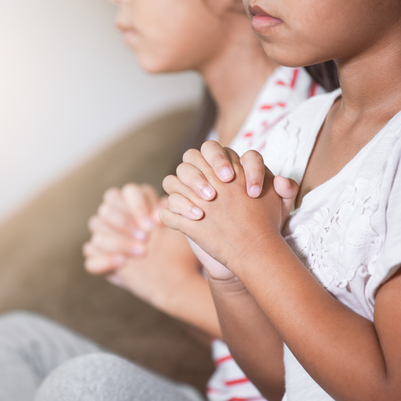 My most enduring memories of youth have to do with the place of faith and prayer in my family. I didn’t fully appreciate the gift that was given to me then. Now I do. And in all honesty, neither did I fully grasp, in my first years as a husband and dad, the beautiful gift, the responsibility, and the opportunities family prayer was. I still remember the prominent weekly ritual of our family getting ready for Sunday mass and the privileged role of Mary in our Polish home. I fondly recall the persevering prayer life of my mother, the power prayer had for my dad when dealing with cancer, the image of my grandfather in prayer, so often with a rosary in hand and ever so contemplative. A perfect family? Far from it. There were moments of harmony, but also conflict. Unity and cohesion, but also misunderstanding, hurt and pain. There was health, but also sickness and death. Rejoicing with successes, crying with betrayal, and conflict followed by repentance, conversion and forgiveness. How did we ever get through it all? Now, after all those years, I look back and see that it was all grace. In Amoris Laetitia, Pope Francis writes: “A positive experience of family communion is a true path to daily sanctification and mystical growth, a means for deeper union with God” (No. 316). He goes on to say, “If a family is centred on Christ, he will unify and illumine its entire life. Moments of pain and difficulty will be experienced in union with the Lord’s cross, and his closeness will make it possible to surmount them” (No. 317). Given the conviction of the Holy Father and Tradition of the Church on the power of prayer in the life of individuals and families, you may also find relief knowing that there is scientific support to Fr. Patrick Peyton’s maxim, “The family that prays together, stays together.” One study, published in the Journal of Family Psychology, explored this adage and identified 7 themes.
There is value in creating a culture of family prayer. To do this means prioritizing time for prayer and intentionally setting aside distractions. Jesus said, “where two or three are gathered in my name, there am I in the midst of them (Matthew 18:20). In essence, that is what prayer is all about. Responding to His initiative, and inviting Jesus, who loves me and my family in an intimate and unrepeatable way, into our homes and hearts. By: Anthony Banka, Family & Youth Coordinator
Note: Chelladurai, J.M., Dollahite, D.C., and Marks, L.D. (2018). The family that prays together: Relational processes associated with regular family prayer. Journal of Family Psychology, 32(7), 849-859. Once per month, St. Bonaventure Pastor Fr. Colin O’Rourke brings Jesus into local schools for Eucharistic Adoration. The Sisters of Divine Mercy play music as students gather in the gym, followed by a short talk. Then, Fr. O’Rourke exposes Jesus, fully present in the Blessed Sacrament, in the monstrance on the altar. He invites students to sit silently before God in prayer for 5-10 minutes, closing with benediction and a prayer to make a spiritual communion. “It’s a bit counterintuitive to have a bunch of elementary school students sit quietly, people just think that’s not going to happen. And invariably, you can hear a pin drop. The kids are actually very attentive,” said Fr. O’Rourke. St. Bonaventure Youth Minister Adam Soos coordinates the devotion between the parish and St. Boniface Elementary, St. Philip Elementary, St. Don Bosco Elementary/Junior High and St. Bonaventure Junior High. He said a transferring student asked him to call his new principal to ensure the school offers adoration. “There is a lot of busyness in life,” said Soos. “Adoration is different from everything else. Instead of feeling scattered or worried, we feel peace. This is utterly authentic and the kids can pick up on it.” Adoration is a relatively uncommon devotion in schools. In Soos seven years of youth ministry at St. Bonaventure, he’s noticed principals new to the school are usually apprehensive until they experience it. “They say ‘wow, I’m sad I haven’t had this for my entire career,’” said Soos. “We get feedback that the school can seemingly be in chaos and after, for the rest of the day everyone is happy, content and there is a sense of peace.” Soos notices more students attend Mass or a parish youth event following adoration in school. Fr. O’Rourke agrees. He said bringing Jesus to school students is more effective than simply inviting them to attend adoration in the parish, but in doing so, students are often inspired to follow Jesus to church. Diocesan Moderator Fr. Wilbert Chin Jon, former St. Bonaventure pastor, introduced adoration in these schools in 2010. When he was reassigned to Our Lady of the Rockies in Canmore, he instituted 20 minutes of guided reflection and silence before the Blessed Sacrament twice a month in Our Lady of the Snows School; a devotion, the current pastor, Fr. Nathan Siray continues.
The occasional ambulance siren and the thrumming of a helicopter hovering a few hundred feet above ground were piercing the stillness of a beautiful afternoon in Panama city’s Cinta Costera. If it weren’t for the tens of thousands of young people present along this three-kilometre stretch lining the city’s Pacific Coast, you would think you were in an abandoned city. The stillness was incredible. “Do not be afraid. Be courageous to be a saint in today’s world,” one could hear blazing through the loudspeakers. “Perhaps, as Church, we have been unable to transmit this with sufficient clarity, because at times we, adults, think that young people don’t want to listen.” Those were the words of Mons. Jose Ulloa Mendieta, the Metropolitan Archbishop of Panama. His impassioned homily on Tuesday’s opening Mass was a rousing call for every young Catholic listening. “Do not be afraid. You need to be heard. You need to keep making us adults nervous.” Stepping Back: Preparing for a Pilgrimage After having missed Krakow in 2016, a group of friends and myself decided sometime in early 2018 to go to Panama and “just do it.” And so that’s what we did — we bought our flights, paid the registration, and waited for January. As the months flew by, it was becoming more and more apparent that this really was going to be a pilgrimage. Not that we didn’t know that ahead of time, but the questions we had during preparations made us realize things we otherwise wouldn’t have had if this were a vacation. Are we going to stay at a school gym or with a host family? Do we have a safe place to leave our stuff? Would I have a bed? Would we be able to do some laundry? How about my cameras: should I bring them? Which lenses should I bring? Do I really need them? With all these little luxuries that I would otherwise take for granted on a normal vacation, I can’t help but see a significant parallel with our own spiritual life. Aware of the fact that a wheelie luggage for this trip was a no-go (given the amount of walking we’d be doing), I was determined to fit all my clothes and belongings in a hiking pack — a small pack that forced me to reduce all that I’m bringing to not only the essentials, but to just enough quantity for these essentials. One pair of shoes. Just enough clothes. Bible. Journal. No cameras. Isn’t this true with our own spiritual life? The lesser the baggage, the better we’re able to focus on the journey. The lesser our attachment to earthly possessions, the greater the freedom we experience. The warmth of a people After waiting at Parroquia de Santa Maria for a few hours (together with hundreds of other pilgrims waiting for a ride to their accommodations), Xiomara finally arrived and came to see us. She and her husband, Rolando, together with their children Carlos and Andrea, would become our host family for the remainder of our stay. The Mejia family was a real blessing. They made a home for those who needed one — mi casa es su casa, they say. But they weren’t the only ones: throughout the week, many of the people you’d meet on the streets would always be up for some conversation, despite us not speaking the same language. Hola! De que pais? My two years of Spanish in university was definitely useful, however horrible. I always asked them to speak slowly, otra vez y mas despacio por favor, so that I could understand them a little better. Then we were fine, or at least it seemed to me. And when we got to a point where we really could no longer understand each other, we would just end the conversation by laughing at ourselves. Ha! I was struck by how friendly these people were. Late one evening, the manager of a local supermarket let us in their staff room to eat the free dinner we claimed at his store. On another occasion, several Muslim men set up a table outside their Mosque, handing out bottles of agua fria to the pilgrims who just came from the opening Mass not too far away. A big sign on their gate said: Bienvenidos amigos peregrinos (Welcome, pilgrim friends). And who can forget that dreadful 21-kilometre hike to the vigil site: walking under the searing 35-degree heat for several hours, these friendly people boosted our morale by offering us a ride to our destination. At one point, a woman stopped her vehicle in the middle of the road and offered us a ride to her house nearby, urging us to take a rest and use the bathroom. And she wasn’t the only one! A few hours and an obvious raccoon tan later, we finally made it to the vigil site: a vast, open field in an outer-city suburb that became the home for tired and exhausted pilgrims that night. It was an incredible experience: when the Holy Father led Adoration, the place was perfectly quiet and still. There we were, a few hundred thousand young people sitting out in the open under the clear night sky, adoring our Eucharistic Lord from a mile away. Later, when it came time for the Benediction, we all sang the Tantum Ergo. It was incredible. Everyone spoke different languages, but we all chanted that ancient hymn in unison — singing the Lord’s praises in the language of Holy Mother Church, which we all knew. It was a beautiful moment that sent chills down my spine: the sense of universality, of Catholicity, was so tangible. A sense of where we came from A few days before, we attended a Traditional Latin Mass (TLM or the Extraordinary Form of the Roman rite) at a downtown Carmelite parish where Archbishop Alexander Sample was preaching. The Archbishop of Portland, OR has become somewhat famed because of his orthodoxy and fidelity to the teachings of Vatican II on the sacred Liturgy. “Why are you here today?” asked the Archbishop, addressing a congregation full young people from all over the world. “You never grew up in this liturgical tradition, so why are you drawn to it?” My experience of WYD has not been without its own share of wishy-washiness in the Liturgy. On two separate Masses — one even celebrated by a Cardinal — people seemed to be more intent on “celebrating” their culture instead of ordering all our attention to Jesus in the Eucharist. At one point right after communion (when everyone was about to kneel and pray), a priest took the mic and asked everyone to stand up and clap our hands to the rhythm of the song his choir was singing. On another occasion, a group went in front right after communion and started dancing to an upbeat, Caribbean-style dance music — the sort of which you’d hear on an Expedia cruise commercial — which was supposed to help everyone “better reflect on the Mass.” Yikes. Hence, being at a TLM that afternoon was a source of assurance and an experience of the sacred, giving us all a sense of where we came from. “I think it’s important for young people to see, experience, and participate in the Mass of the Ages…the same form of the Mass that nurtured our grandparents and so many of the saints we venerate today.” Put out into the deep Having gone to several conferences before, I never thought that World Youth Day would hang heavy on my heart the moment it’s over. However, this one is different. Throughout this entire pilgrimage, a message that I kept on getting from the catechesis, homilies, talks, and conversations was do not be afraid. And how appropriate — I was at an event started by a saintly man who never tired of saying the same thing during his pontificate. “Most of us sinners live our lives in the shallow and spend our lives on the seashore,” said Bishop Barron, speaking about us being too easily amused with insignificant things and staying within our own comfort zones. “But when Christ the Lord steps into your boat and gets in your life, he will bring you to the deep.” Do not be afraid….He will bring you to the deep. This whole journey has been a reward in itself. Everything else was just a bonus. Now that I’m going back down to the valley after my mountaintop experience, the real earthly pilgrimage continues. Written by: Ryan Factura
She comes to school hungry and afraid. He walks the halls alone. Both are noticed by their high school peers, but the latter don’t often know what to do. Some will reach out, some will say a prayer—and thanks to a social justice initiative championed by Calgary’s Catholic high schools, others will mobilize for change. Organized by the Calgary Catholic School District (CCSD) and its 12 high school chaplains, the second-annual Social Justice Summit is a day-long event designed to inspire Catholic high schoolers who feel called to action, says Cathy Sandau, summit organizer and a consultant with the district’s Religious Education and Family Life department for grades 7 to 12. “Our high school students are looking for ways to do Christ’s work in their schools and city and the theme of this year’s summit; We are the Hands and Feet of Christ, reinforces that desire.”
A proponent of the summit, Simoni believes the event helps students develop a greater connection to Christ while nurturing their faith through discipleship and evangelization. After last year’s summit, Simoni worked with students at Grandin to launch a social justice initiative to help economically-vulnerable students afford lunch. Building on the success of a competition staged at last year’s summit, each of the 13 schools at the 2019 summit has been asked to present a 60-second video pitch to earn a $1,000 grant. The money will help the winning school launch or enhance a social justice program of its own. “It’s really wonderful to see what the students come up with,” says Marilou LeGeyt, outreach ministries coordinator with the Calgary Catholic Diocese. Last year’s top prize went to Bishop Grandin’s affordable lunch program. “One of my favourite pitches was for a peer-to-peer support program for immigrant students at Father Lacombe High School,” recalls LeGeyt. This year’s grant, sponsored by the Calgary Catholic Education Fund, is called the Bishop Henry Social Justice Grant and Simoni admits he’s excited to see what issues the students decide to tackle. Community connections
While the video competition is likely to be one of the summit’s highlights, Sandau is also excited about student reaction to the rest of the program. Participants will attend three of six breakout sessions led the Society of St. Vincent de Paul, L’Arche Calgary, Inn from the Cold, Mission Mexico and Development & Peace. The sixth session will be hosted by Dwight Farahat, a spoken-word poet and songwriter from Siksika First Nation. Over the lunch break, students will visit a kind of social justice trade fair to interact with representatives from Providence Care Centre, CAWST (Centre for Affordable Water and Sanitation Technology), Calgary Homeless Foundation, Catholic Christian Outreach, Calgary Catholic Immigration Society, NET Ministries and Ten Thousand Villages. The Diocesan social justice department will also be represented, as will one of the Diocese’s major social justice initiatives, Feed the Hungry. “Our goal is to give students a place to talk to each other about what they’re already doing in their schools and community and to learn what others are doing—and how they might get involved,” says Sandau. “This is the first year I’ve been involved, and I’m really excited to build on the success of the inaugural year,” adds Sandau. “Young people of faith have so much to offer. It makes sense to connect students with the people and organizations who want their help—and to encourage them to develop new initiatives, too.” Written by: Joy Gregory “You then, my child, be strong in the grace that is in Christ Jesus; and what you have heard from me through many witnesses entrust to faithful people who will be able to teach others as well” (2 Timothy: 2: 1-2). It is with these words that the Apostle Paul exhorts one of his closest collaborators in undertaking the task of evangelization. In fact, it could be said to have been one of St. Paul’s key strategies: identify the obvious leaders from among the Christian communities he was establishing and invest extra attention and formation in them in order that they could go forth and more effectively preach the Gospel. A hallmark of the Pontificate of our Holy Father, Pope Francis, has been his call to go out to the peripheries. This has become a popular anthem but before we charge out to these peripheries, we should ask a few questions first. Questions such as, who are on the peripheries? what are we bringing them? what’s the most effective way to do so? As exciting and adventurous as it may sound to rush out to those margins inspired by the call of the Pope and love for our Lord, we should do so strategically. Borrowing the strategy of Paul for Timothy is how we hope to do so with what has become a time-honoured tradition in our diocese and province. Upon my interim appointment to supervise the Office of Youth Ministry, one of the responsibilities I inherited was to work with our One Rock coordinator, Raluca Ungureanu, in organizing this year’s event. After careful review, under the direction of Bishop McGrattan and with the support of his brother Alberta Bishops, we have significantly modified the event which we are now calling: One Rock 2.0 This will be an event exclusively open to young adults ages 18-35 (married or single) contained to one day at St. Michael’s Church, Calgary on Saturday, 29 September 2018. Based upon recurring feedback over the years combined with the absolute need to tighten the expense, we have introduced these modifications. The exciting approach we will begin using to register attendance is designed to directly impact our parishes. We want this day to be an enriching and formative experience for the young adults in our communities who are already showing signs of leadership- our “Timothys”. As delegates from parishes, the young people who attend One Rock 2.0 will be inspired to return home, empowered to be protagonists in the New Evangelization. In light of the vision our Bishop has set for intentional outreach to young adults in the diocese, soon to be followed upon by the October 2018 Synod of Bishops on Young People, the Faith and Vocational Discernment, now is the time to step up and do all in our power to support the future leaders of our Church. This will require challenging our parishioners to support the next generation, spiritually and materially. I, along with our dedicated One Rock Steering Committee, have every confidence that this event, though smaller in scope, will be powerful in the intensity of its focus. Not only do we count on your support, but we very much look forward to working together to empower our modern young people to be the up and coming pillars of our parishes and local Church, boldly and strategically reaching into those peripheries with the transformative power of the Gospel. Who do you know and hope will be at One Rock 2.0? Well, TELL THEM! By Fr. Cristino Bouvette | Director of Vocations & Interim Director of the Office of Youth Ministry For more information about One Rock - visit http://onerock.ca
|
Author
Catholic Pastoral Centre Staff and Guest Writers Archives
July 2024
Categories
All
|
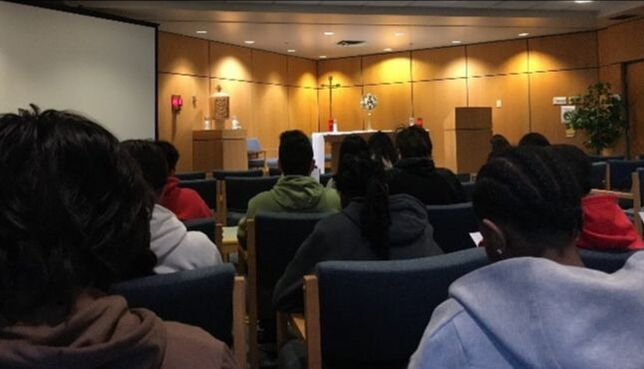

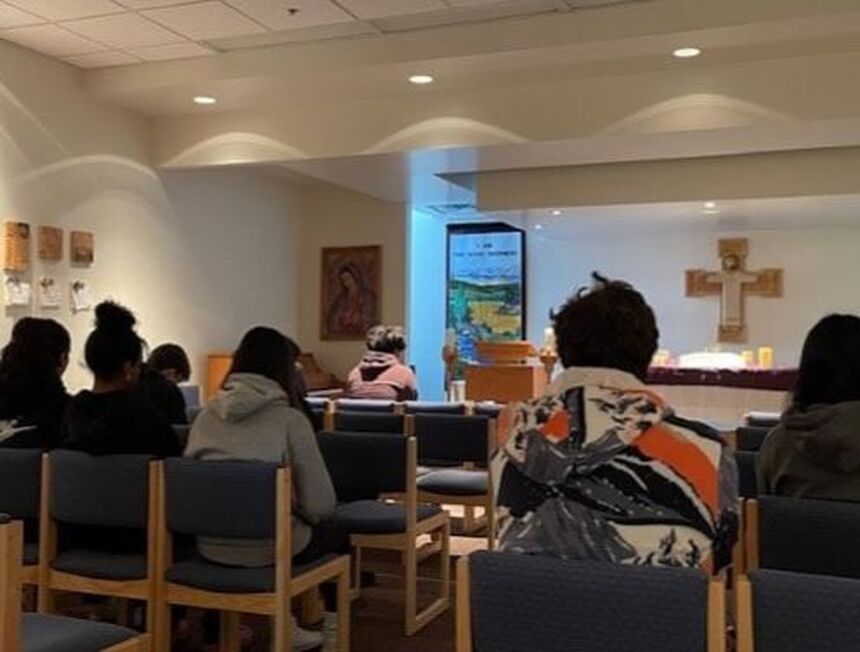
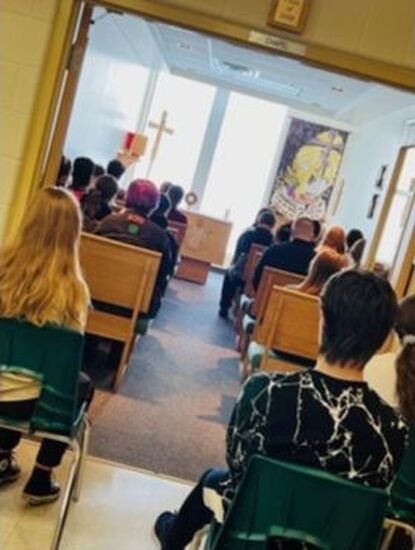
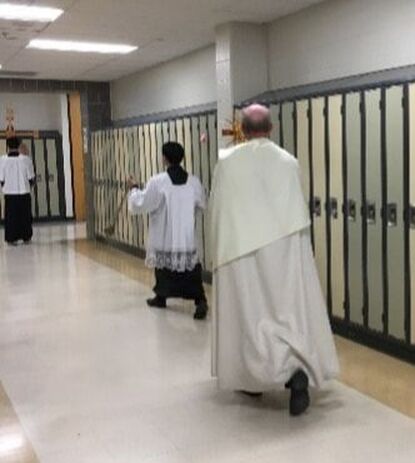
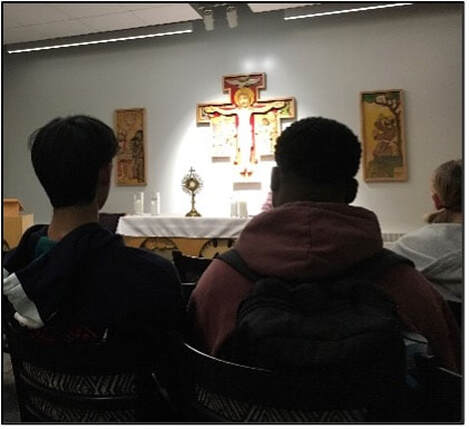
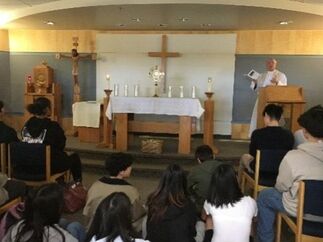
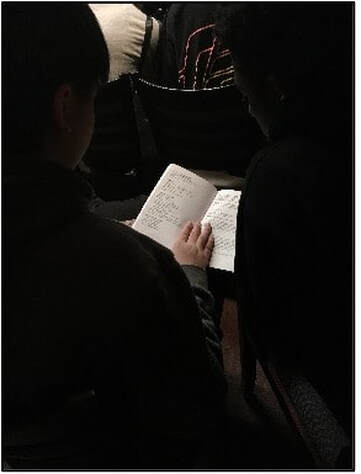
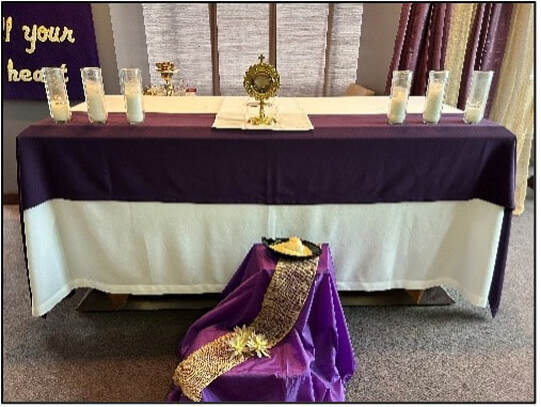
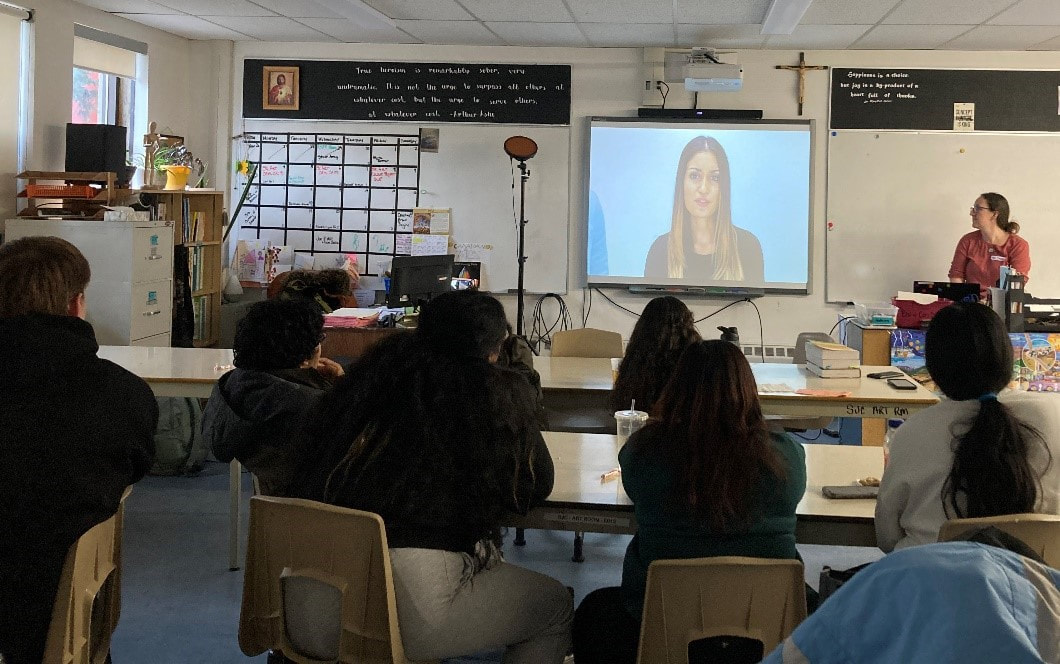

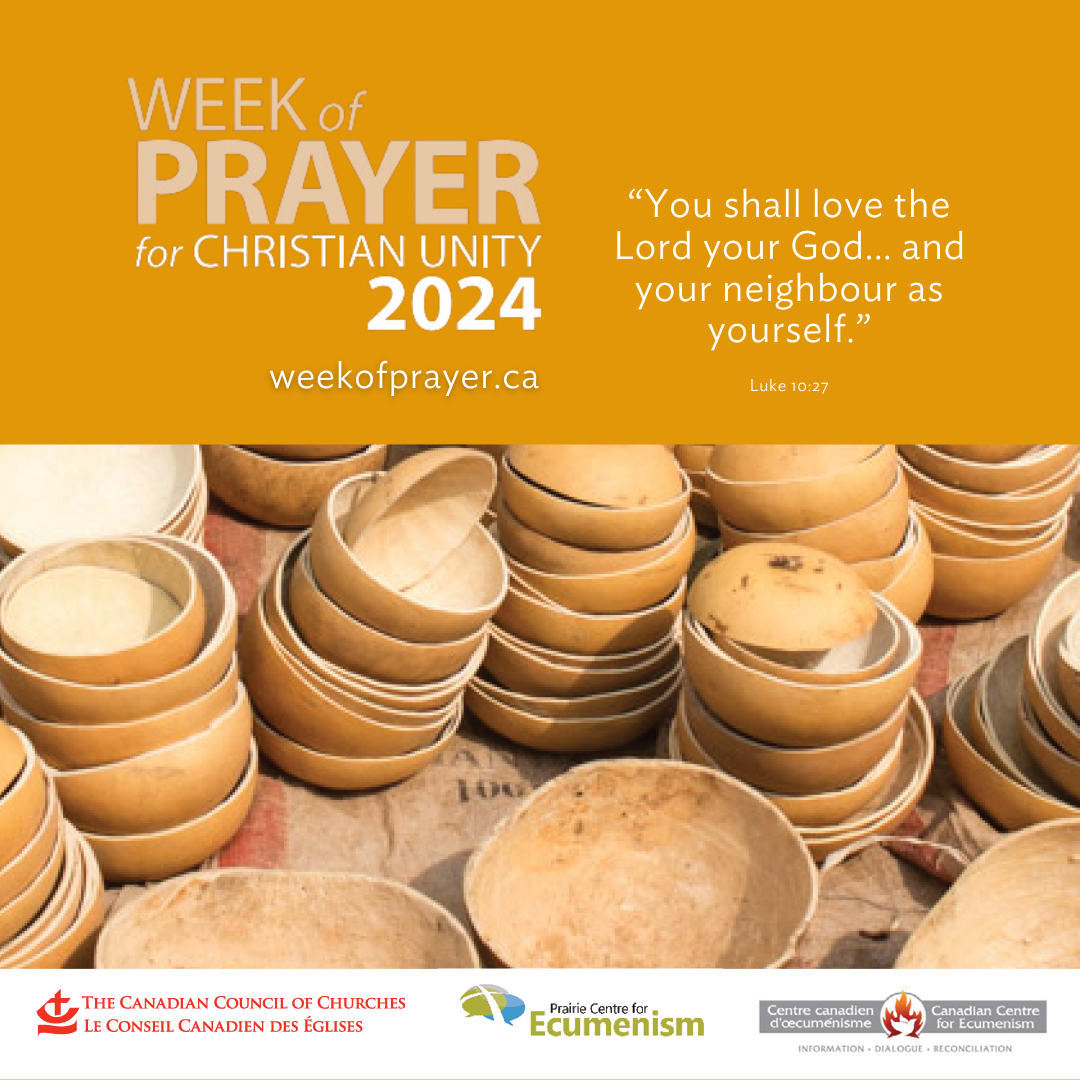
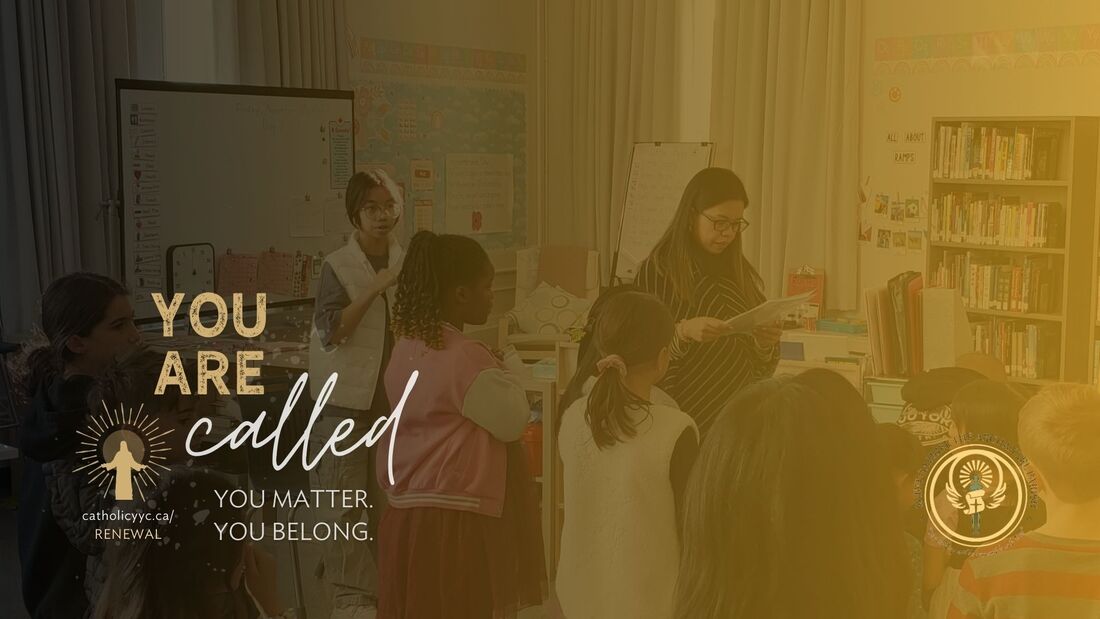

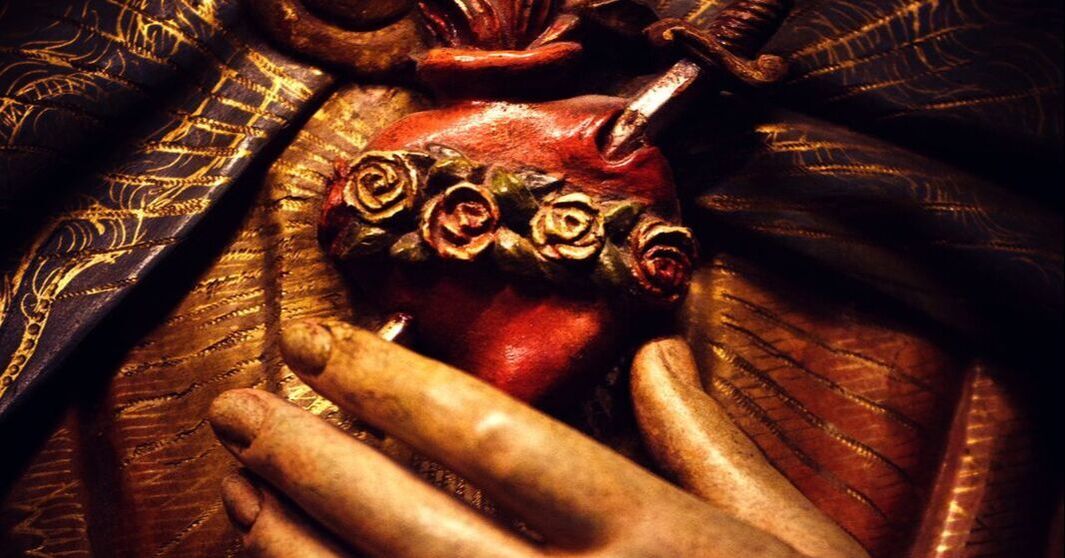


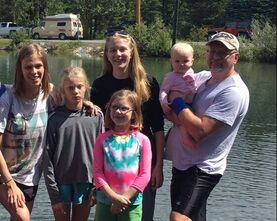
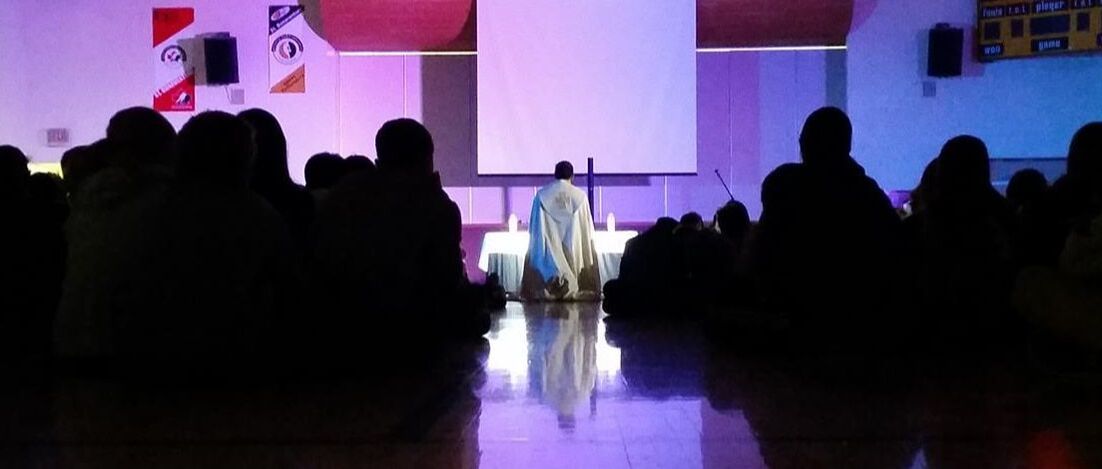
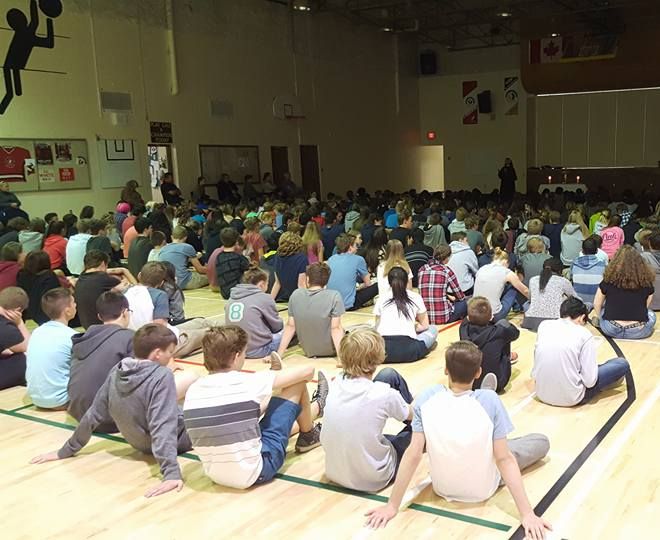




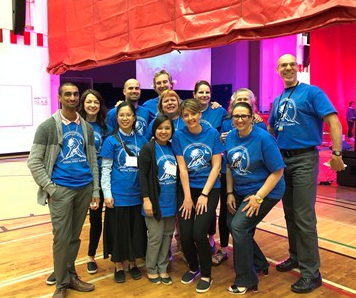
 RSS Feed
RSS Feed